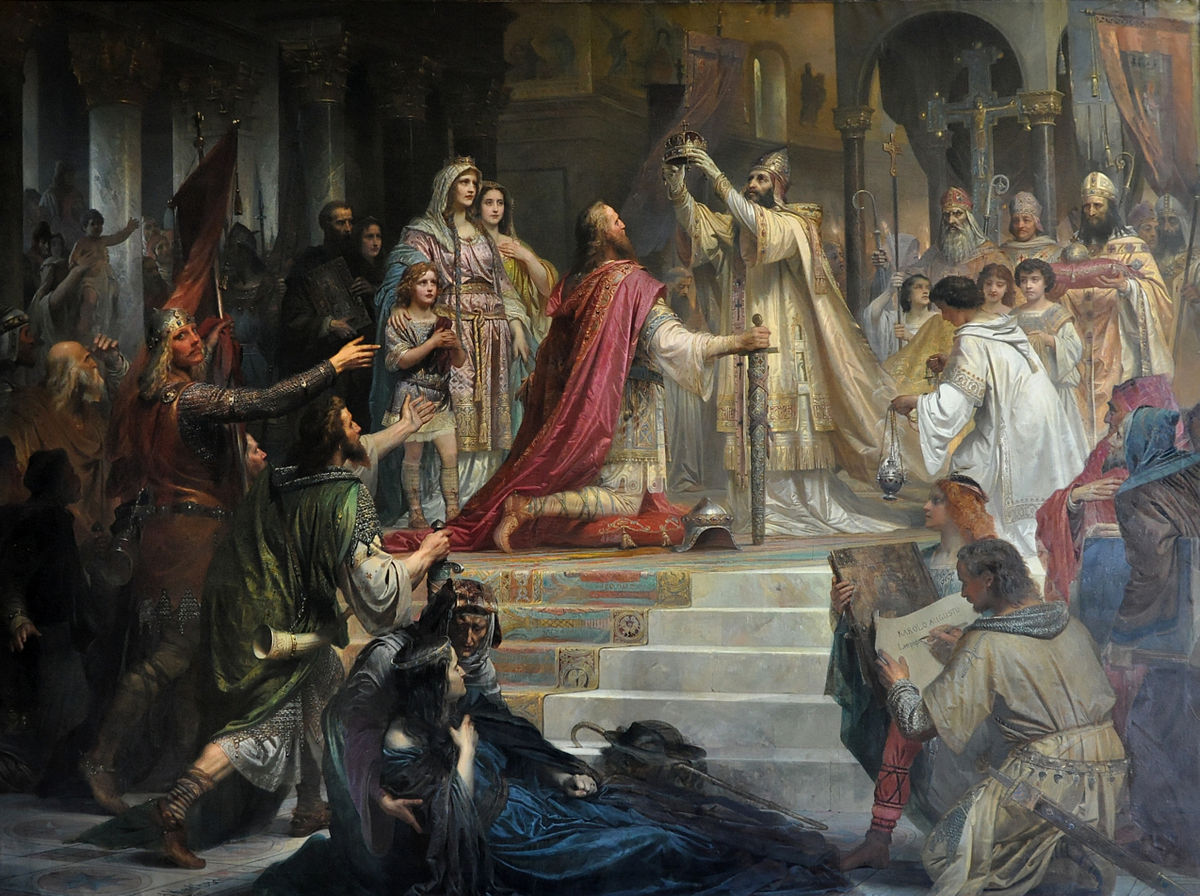
Holy Roman Emperor
St. Peter's Basilica, Piazza SIn 800 Pope Leo III owed a great debt to Charlemagne, the King of the Franks and King of Italy, for securing his life and position. By this time, the Eastern Emperor Constantine VI has been deposed in 797 and replaced as monarch by his mother, Irene. Under the pretext that a woman cannot rule the empire, Pope Leo III declared the throne vacant and crowned Charlemagne Emperor of the Romans (Imperator Romanorum), the successor of Constantine VI as Roman emperor under the concept of translatio imperii. He is considered the father of the German monarchy. The term Holy Roman Emperor would not be used until a few hundred years later.
From an autocracy in Carolingian times (CE 800–924) the title by the 13th century evolved into an elective monarchy, with the emperor chosen by the prince-electors. Various royal houses of Europe, at different times, became de facto hereditary holders of the title, notably the Ottonians (962–1024) and the Salians (1027–1125). Following the Great Interregnum, the Habsburgs kept possession of the title without interruption from 1440 to 1740. The final emperors were from the House of Habsburg-Lorraine, from 1765 to 1806. The Holy Roman Empire was dissolved by Francis II, after a devastating defeat by Napoleon at the Battle of Austerlitz.
